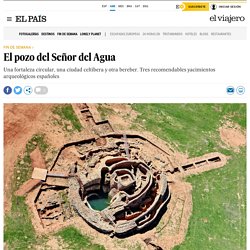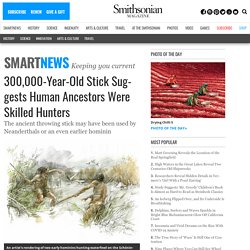

Take a Free Virtual Tour of Five Egyptian Heritage Sites. Earlier this month, Egypt’s Ministry of Tourism and Antiquities announced the release of five new virtual tours of historic sites, adding to the range of online adventures that you can now embark on from home.

The tours explore the tomb of Meresankh III, the tomb of Menna, the Ben Ezra Synagogue, the Red Monastery and the Mosque-Madrassa of Sultan Barquq. Each virtual experience features detailed 3-D imagery through which users can “walk” by clicking hotspots along the structures’ floors. As James Stewart reports for the Guardian, the tours boast “beefed up” 3-D modeling made by experts with Harvard University’s Giza Project. Unlike their real counterparts, most of which charge a small entry fee, the virtual renderings are free to all.
“The virtual tours target both [international] tourists and Egyptians, a ministry spokesperson tells Al-Monitor’s Amira Sayed Ahmed. Harvard archaeologist George Andrew Reisner discovered the queen’s tomb in 1927. This Mysterious Ancient Structure Was Made of Mammoth Bones. Who Invented the Alphabet? Centuries before Moses wandered in the “great and terrible wilderness” of the Sinai Peninsula, this triangle of desert wedged between Africa and Asia attracted speculators, drawn by rich mineral deposits hidden in the rocks.

And it was on one of these expeditions, around 4,000 years ago, that some mysterious person or group took a bold step that, in retrospect, was truly revolutionary. Scratched on the wall of a mine is the very first attempt at something we use every day: the alphabet. Giving Overdue Credit to Early Archaeologists' Wives. In his 1933 Archaeology of Palestine, famed American archaeologist W.

F. Albright mused, “where expeditions are mixed it is highly desirable to have the Director’s wife present, both to provide a feminine social arbiter and to avert scandal.” His advice evokes the male-dominated culture of archaeology in the Near East in the late nineteenth and twentieth centuries. But as Norma Dever writes, the wives of archaeologists actually performed essential—and overlooked—domestic and academic labor in this often-dangerous and exclusive climate. Giving Overdue Credit to Early Archaeologists' Wives. Ancient migration transformed Spain's DNA. Rome Reborn: Take a Virtual Tour of Ancient Rome, Circa 320 C.E. A few years ago, we featured Rome Reborn, which is essentially "a 3D digital model of the Eternal City at a time when Ancient Rome’s population had reached its peak (about one million) and the first Christian churches were being built.

" Rome Reborn offers, declared Matthias Rascher, "a truly stunning bird’s-eye view of ancient Rome that makes you feel as if you were actually there. " You may also remember our posts on video analyses of great works of art by Khan Academy's Smarthistory. In Cave in Borneo Jungle, Scientists Find Oldest Figurative Painting in the World. On the wall of a cave deep in the jungles of Borneo, there is an image of a thick-bodied, spindly-legged animal, drawn in reddish ocher. It may be a crude image. But it also is more than 40,000 years old, scientists reported on Wednesday, making this the oldest figurative art in the world. El pozo del Señor del Agua. Aunque resulta difícil, casi imposible, la tarea de escoger tres yacimientos arqueológicos cuya visita sea imprescindible, aquí están tres enclaves singulares, mágicos, que hay que visitar para empezar al menos a entender lo que esconde la tierra que pisamos, lo que fuimos y tal vez el polvo que seremos.

La fortaleza del agua Motilla del Azuer (Ciudad Real) Time: The History & Future of Everything – Remastered. A Video Game Shows the True Colors of Ancient Greece. Blame the Italian Renaissance.

The rediscovery of Greco-Roman sculpture in the 15th century spawned a long-held misperception that the artists of Antiquity intentionally left their work unpainted. How Do Scientists Date Fossils? This is the fourth in a five-part series written by experts featured in the Smithsonian's new Hall of Fossils—Deep Time exhibition, now on view at the National Museum of Natural History.

The full series can be found by visiting our Deep Time Special Report “No fossil is buried with its birth certificate,” wrote the renowned science editor Henry Gee in his 2000 treatise, In Search of Deep Time. While true, fossils are buried with plenty of clues that allow us to reconstruct their history. Moving Stories - Re-imagining Migration.
Amateur Archaeologists Studying Aerial Maps of the U.K. Spot Dozens of Hidden Historical Structures. With archaeology digs on hold due to the COVID-19 pandemic, cooped-up history buffs are making their mark.

As Steven Morris reports for the Guardian, volunteers tasked with scouring aerial surveys of England for signs of human habitation have discovered dozens of previously unknown structures after studying just a tenth of the data available. Dating from the prehistoric period to the medieval era, the sites are scattered between Cornwall and Devon in southwest England. 300,000-Year-Old Stick Suggests Human Ancestors Were Skilled Hunters. A recently unearthed, 300,000-year-old wooden stick may have once been thrown by extinct human ancestors hunting wild game, according to new research.

On the surface, the find—a short, pointy piece of brown wood loosed from the mud—sounds drab. “It’s a stick, sure,” Jordi Serangeli, an archaeologist at the University of Tübingen and co-author of the study, tells the New York Times’ Nicholas St. Fleur. But calling it “just a stick,” he says, would be like calling humanity’s first step on the moon “only dirt with a print.” Lo que cuenta sobre la desigualdad el cementerio de los aristócratas de la Edad de Bronce. “Existe ese dicho de que siempre ha habido ricos y pobres, pero es mentira.

Antes del Neolítico [hace unos 10.000 años], vivíamos en un mundo en el que éramos todos prácticamente iguales”. Ancient European Stone Monuments Said to Originate in Northwest France. The Epic of Gilgamesh: Plot Overview. The epic’s prelude offers a general introduction to Gilgamesh, king of Uruk, who was two-thirds god and one-third man. He built magnificent ziggurats, or temple towers, surrounded his city with high walls, and laid out its orchards and fields. He was physically beautiful, immensely strong, and very wise. Although Gilgamesh was godlike in body and mind, he began his kingship as a cruel despot. El maíz también se domesticó en la selva amazónica. La historia de la domesticación del maíz no era como la habían contado.
Hasta ahora se pensaba que la conversión de una mala hierba en el principal cereal del planeta se produjo en tierras mexicanas y desde ahí se expandió por toda América. Ancient Greece. Mini Terracotta Army Unearthed in China. One of the greatest archaeological discoveries of all time is the Terracotta Warriors, a literal army of 7,000 life-size soldier and horse funerary statues buried in pits near the tomb of Qin Shi Huangdi, the first emperor of a unified China.
While putting together such a massive burial truly took the resources of an emperor, the idea of being buried with an army must have sounded pretty cool to other blue bloods—as Owen Jarus at LiveScience reports, a miniature terracotta army was recently discovered in China, likely belonging to the tomb of a lesser royal. According to the report, recently translated into English in the journal Chinese Cultural Relics, the mini-warriors were found at Shanwing Village in the Linzi District of Zibo City, in Shandong Province. Un animal ensartado por una lanza es el primer dibujo figurativo de la humanidad. What is the oldest civilization on Earth? Mystery of the Varna Gold: What Caused These Ancient Societies to Disappear? Treasure found in prehistoric graves in Bulgaria is the first evidence of social hierarchy, but no one knows what caused the civilization’s decline Perrhaps you’d like to see the cemetery?”
Prehistoric Social Networks. Varna Necropolis. The so-called Varna Necropolis (Bulgarian: Варненски некропол) (also Varna Cemetery) is a burial site from 4569–4340 BC in the western industrial zone of Varna (approximately half a kilometre from Lake Varna and 4 km from the city centre), internationally considered one of the key archaeological sites in world prehistory.
There were other necropoles dating from later Greek and Roman periods around the ancient city. The oldest gold treasure in the world, dating from this period, was discovered at the site.[1] Clay anthropomorphic head, Late Chalcolithic period, 4500-4000 BCE, Hamangia Culture, found submerged in Varna Lake, Varna Archeology Museum Discovery and excavation[edit] Hallado en el mar Negro un barco intacto de 2.400 años. Un equipo de arqueólogos ha encontrado el barco hundido e intacto probablemente más antiguo de la historia en el fondo del mar Negro. Los indicios de los investigadores apuntan a que ha permanecido en el lecho marino durante más de 2.400 años. Her 3,000-Year-Old Bones Showed Unusual Signs of Wear. It Turns Out, She Was a Master Ceramicist. Back in 2009, archaeologists at Eleutherna—an ancient city-state located on the Greek island of Crete—discovered a woman’s skeleton that showed unusual signs of wear.
As Michael Price writes for Science magazine, in comparison to the other females at the site, the muscles on the right side of her body were notably developed, while the cartilage on her knee and hip joints was worn away, leaving the bones smooth and ivory-like. Initial analysis of the woman’s remains, as well as the pottery found in similar graves at the Orthi Petra burial site, indicated that the approximately 45 to 50 year old lived between 900 B.C.. and 650 B.C.
Oldest-drawing-ever-found. Yamnaya: Una invasión borró del mapa a los hombres de la península Ibérica hace 4.500 años. Hace más de 5.000 años, grupos de pastores a lomos de caballos se lanzaron desde las estepas del este de Europa a la conquista del resto del continente. India: los milenarios dibujos rupestres que pueden dar pistas sobre una civilización perdida.
Derechos de autor de la imagen BBC Marathi Un nuevo hallazgo en India tiene a los arqueólogos entusiasmados. El descubrimiento de grabados rupestres que se cree tienen decenas de miles de años en el estado de Maharashtra, en el oeste de India, podría dar pistas sobre una civilización desconocida hasta ahora, según informa el periodista de la BBC Mayuresh Konnur. Dolphins Mug for Camera in Awareness Test. Climate Change Likely Iced Neanderthals Out Of Existence. About 40,000 years ago, Neanderthals began disappearing from Europe, but exactly why they died out is a mystery. Some paleoarchaeologists have hypothesized it’s possible they simply couldn’t reproduce fast enough to keep up with the modern humans moving into Europe around that time. The Rise and Fall of the Great Library of Alexandria: An Animated Introduction.
The Hymn to Ninkasi, Goddess of Beer. Ancient Ceramic Cups Reveal Oldest Direct Evidence of Beer in Mesopotamia. Archaeologists have long known beer was important in the ancient world, but mainly from writings and drawings—finding actual archaeological evidence of the fermented beverage has been a major challenge. Rediscovering Ancient Greek Music (2017) Untitled Document. Basílica paleocristiana de Porto Cristo.
Basílica paleocristiana de Porto Cristo. Buddhist wheel of life british museum. African Rock Art. Prezi. A Massacre Frozen in Time: Skeletons in Sweden Reveal Ancient Attack. Harnessing Summer Excitement: Using a Medieval Travel Book to Spark Critical Thinking. Ancient Rome's System of Roads Visualized in the Style of Modern Subway Maps. A Fossilized Finger Bone May Be From the Earliest Humans on the Arabian Peninsula. Troia. Down From the Trees, Humans Finally Got a Decent Night’s Sleep. A Huge Scale Model of Ancient Rome at Its Architectural Peak, Originally Commissioned by Mussolini.
‘Cheddar Man,’ Britain’s Oldest Skeleton, Had Dark Skin, DNA Shows. Matabele Ants Are First Animal to Systematically Heal Wounded Comrades. This 3,500-Year-Old Greek Tomb Upended What We Thought We Knew About the Roots of Western Civilization. Were Neanderthals the Earliest Cave Artists? New Research in Spain Points to the Possibility. Cooperation and the evolution of hunter-gatherer storytelling. Why Holiday Stories Matter. AAGC - Mitología Mesopotámica. The Courtship of Inanna and Dumuzi. Big History Project. Rome Reborn 2.2: A Tour of Ancient Rome in 320 CE.
El hombre que resucita la música de la Prehistoria. El vino más antiguo es de Georgia. Las mujeres protagonizaron la revolución agraria de la prehistoria. The Great Fatted Bull. The Great Fatted Bull. Las vacas y los caballos, en el origen de la desigualdad entre humanos. Greater post-Neolithic wealth disparities in Eurasia than in North America and Mesoamerica. Greater post-Neolithic wealth disparities in Eurasia than in North America and Mesoamerica. Los agricultores del Neolítico se mezclaron con las poblaciones de cazadores. Before They Pass Away - Design Week. Juan Luis Arsuaga: «El parto humano es traumático, casi una enfermedad» La especie elegida - Juan Luis Arsuaga e Ignacio Martinez. The Agricultural Revolution in Prehistory: Why did Foragers become Farmers? - Graeme Barker. Socialesjaranda - Bestiario del Nuevo Mundo.
Neápolis, el descubrimiento de una ciudad romana sumergida en Túnez. Vérification de sécurité nécessaire. Los cuervos son más previsores que un niño pequeño. Listo como un cuervo. Los aborígenes australianos son los humanos vivos más antiguos.